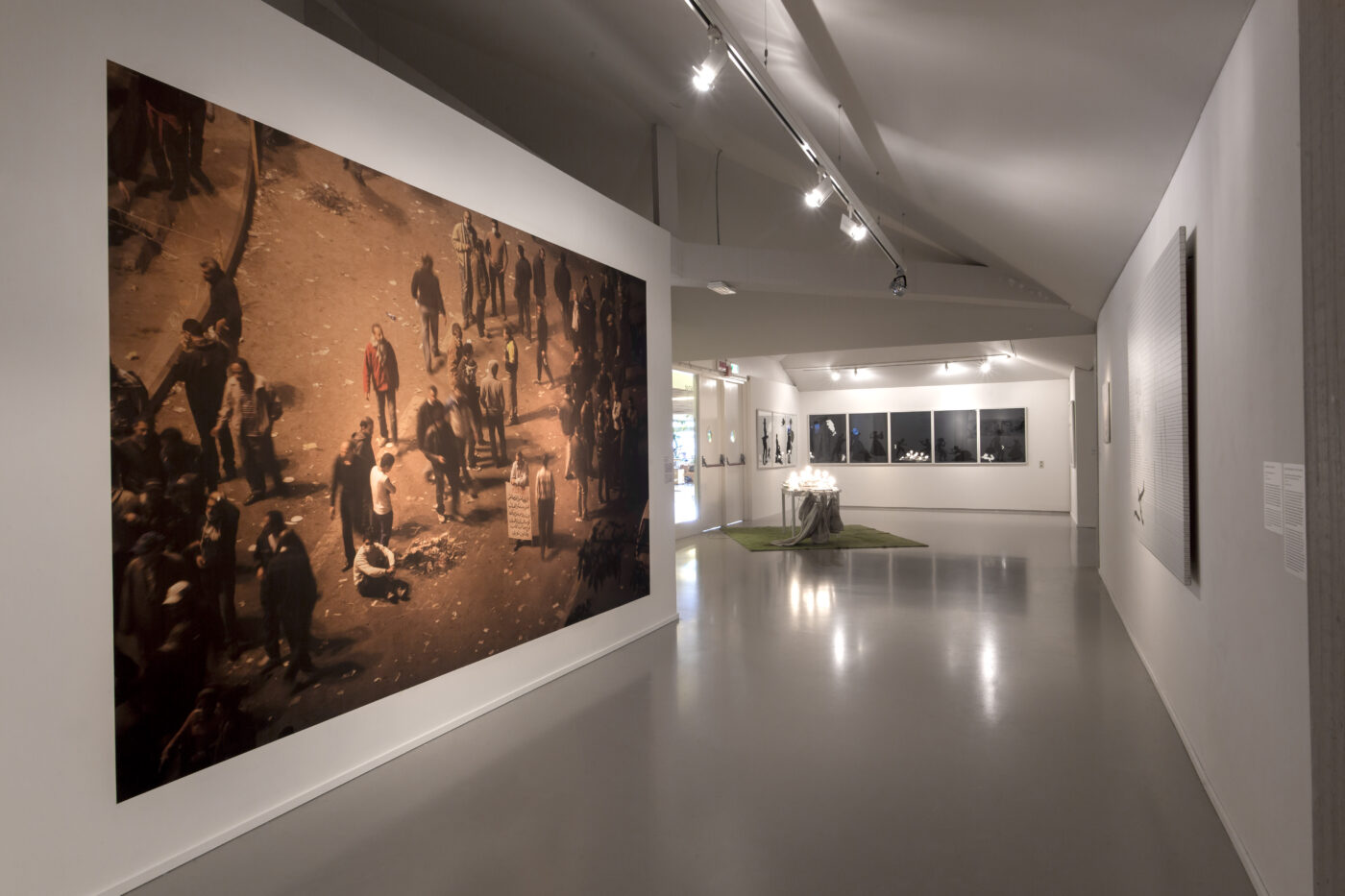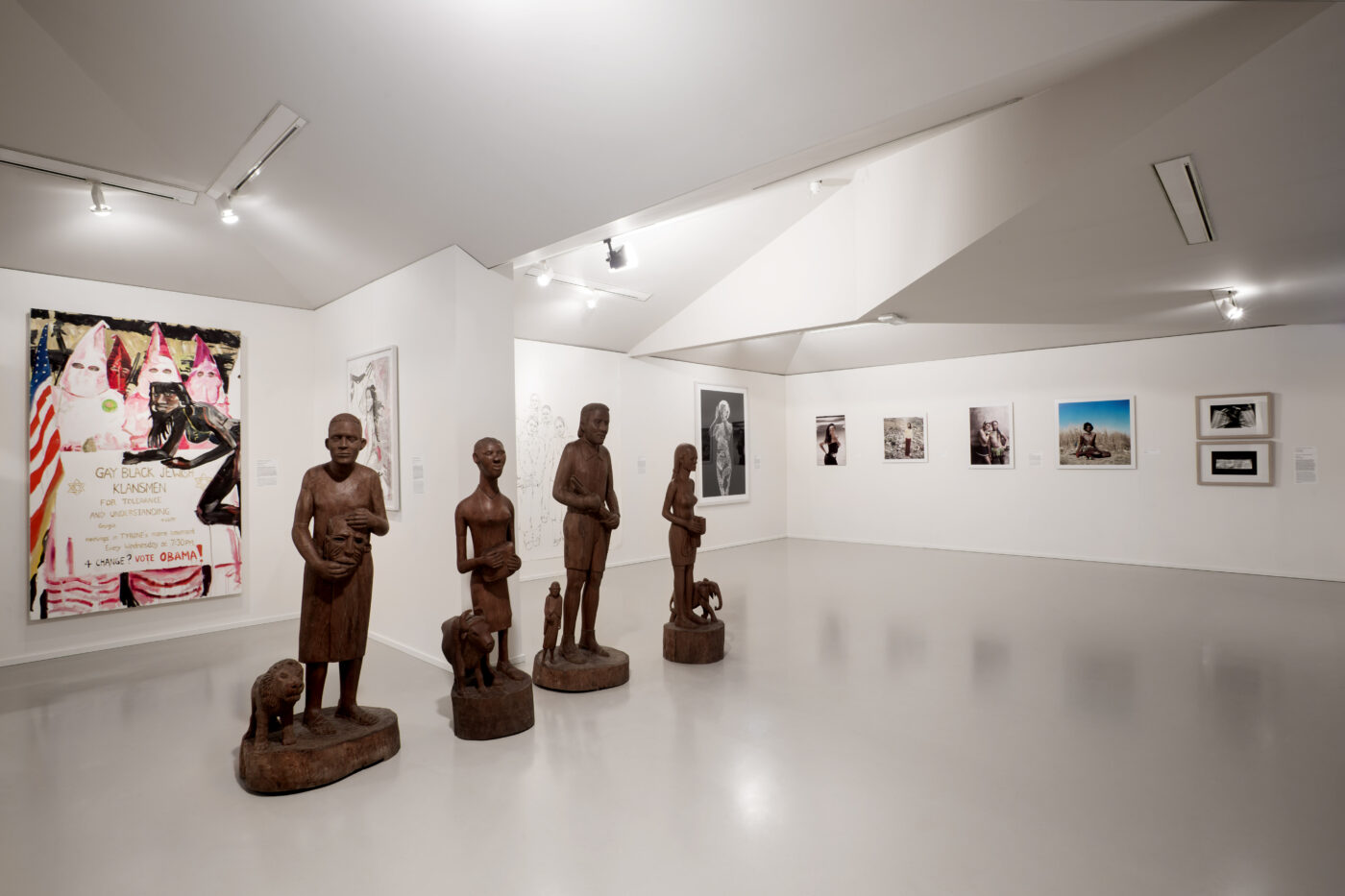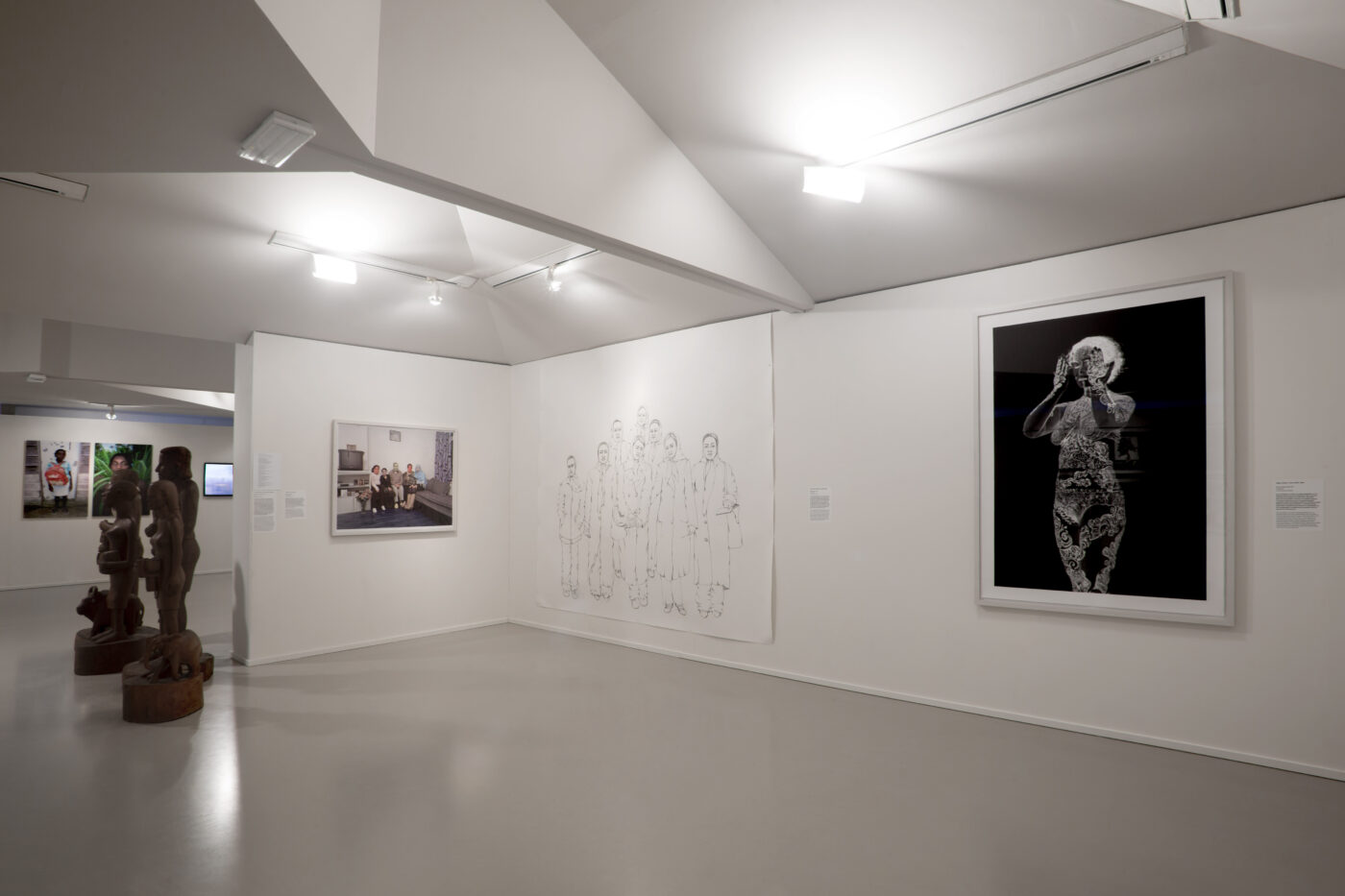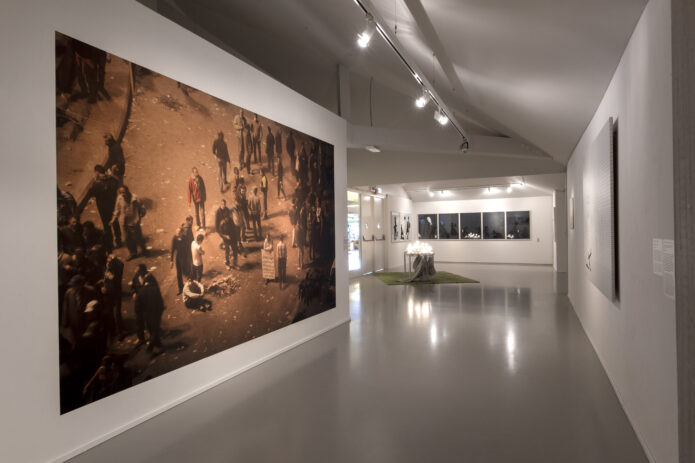Review: Identity in the age of globalism. A review of the exhibition 'What We Have Overlooked'
On the poster of What We Have Overlooked (2016), we see a handsome boy in red pumps and a bead skirt around his waist. His pose is that of a pin-up model, but the decor behind him – with its withered reeds and scattered rubbish – is anything but glamorous. The photographer who shot this picture is Zanele Muholi and she is famous in her homeland, South Africa, in a way that nobody would envy. Her explicit pictures of gays, lesbians, transvestites and transgenders have made her the object of virulent hatred. The international art public discovered Muholi in the aftermath of the Documenta 2012, where her work towered above the rest.
By that time Museum Arnhem already had Muholi’s work in the collection, thanks to the perceptive eye of conservator Mirjam Westen. Identity, post-colonialism and globalism were hot topics in Arnhem when other museums were not yet aware of these themes forming a new leitmotiv in art. But most people are not aware of Museum Arnhem’s pioneering approach. The museum made its reputation as a specialist in figuration and in feminist art. But few people have seen any of the collection at all. For those who dwell in the Randstad, Arnhem is practically in Germany and the awkward routing through the museum is not very inviting. Hopefully all this will change after the coming renovation. In the meantime the Framer Framed guest exhibition gives visitors a taste of what this museum has to offer. What We Have Overlooked showcases the work of 21 artists, collected during the past thirty years

What We Have Overlooked (2016), curated by Mirjam Westen for Framer Framed, Amsterdam. Photo: Michiel Landeweerd / Framer Framed
A place of honour is reserved for the cut out silhouettes of Kara Walker. The American artist plays with stereotypes from the history of slavery, ranging from Uncle Tom to the mistress of the master. In this case Arnhem was also ahead of the game. Long before Walker became the darling of biennale curators, Arnhem was already showing her work.
Many of the art works in this exhibition strike the viewer with their twist of humour, despite the subjects’ grimness. The portrait of an immigrant family on a couch, with their green, blue and red faces, is hilarious. Michael Tedja’s explosive sketches, of an ironical dreadlock sporting cowboy for instance, are more stinging. Regina José Galindo’s performance art is unrelentingly intense. She carved the word ‘perra’ in her thigh, the Spanish word for ‘slut’, which is used in macho Guatemala to discredit victims of sexual abuse.
What We Have Overlooked fits seamlessly in b’s programme, with its focus on ‘transcultural art’ since 2009. How very topical that is, is shown by a work of art of which the name serves as title for the exhibition. In this video by Lida Abdul, a man with a flag walks into a lake. He submerges himself completely until only his raised hand holding the flagpole is still visible, while at the bottom of the screen, headlines roll by; hollow cant about states, national identity and national character. This is work with a powerful resonance in the period of Brexit, a Russian invasion of the Ukraine and the black banner of IS.
Text by Edo Dijksterhuis,
originally published in newspaper Parool, July 8, 2016
Top image: Zanele Muholi – Miss D’Vine I (2007), collection Museum Arnhem. The exhibition title is derived from work by Lida Abdul – What We Have Overlooked (2010). Installation photography: Michiel Landeweerd
- Museum Arnhem
Links
Collection development / Photography /
Exhibitions

Exhibition: What We Have Overlooked
A collection presentation of Museum Arnhem, curated by Mirjam Westen
Network





